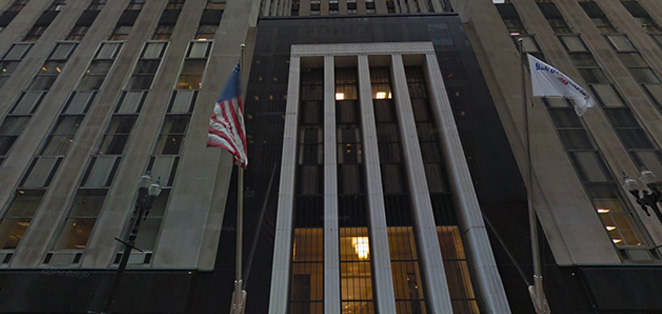Design Professional Issues
Implied Warranty of Habitability
A design professional who did not contribute to the actual construction of the home is not a builder-vendor and cannot be held liable for a breach of the implied warranty of habitability.
Paukovitz v. Imperial Homes, Inc., 271 Ill.App.3d 1037, 649 N.E. 2nd 473 (1995); Sienna Court Condominium Association v. Champion Aluminum Corporation, 2017 Il App (1st) 143364, *57, *60, *61.
Illinois law recognizes that ‘architects are professionals who design and create plans and specifications for the construction of buildings or structures. Architects are not workmen and they are not obligated to perform their professional services in a ‘workmanlike manner’. Bd. of Managers of Park Point at Wheeling Condominium Association v. Park Point at Wheeling, LLC, 2015 IL App (1st) 123452 *29, *30, N.E.3d 1250, 1261-1262 (1st Dist. 2015).
Contract Defines Scope of the Design Professional’s Duty.Standard of Care
Duty is limited and defined by the terms of its contract. The scope of the design professional’s duty, ie: the degree of professional skill and care, although based upon tort rather than contract, is defined by that contract. The nexus is clear, liability can only arise when there is a breach of the obligations imposed by contract.
Ferentchak v. Village of Frankfort, 105 Ill.2d 474, 475 N.E.2d 822, 825 (Ill. S.C. 1985); Thompson v. Gordon, 241 Ill. 2d 428, 948 N.E.2d 39 (Ill. S.C. 2011)
Significant A201 2017 (General Conditions) Changes
Initial Decision Maker: This is normally the Architect, who shall be impartial to both Owner and Contractor, and shall not be liable for decisions in good faith. (A 201 § 1.1.8)
Alternate Means and Methods: In the 2007 version, if the Contractor found that the proposed construction means and methods were unsafe, the Contractor was required to provide written notice and stop that portion of the Work, and the Architect was to provide written instructions to address the issue. In the 2017 version, the Contractor shall provide notice but is not allowed or required to stop Work. The Architect’s responsibility for review of the alternative means and methods is now reduced to “conformance with the design intent”. Unless the architect objects to the proposed alternative the Contractor shall perform the work using its alternative. (A201 § 3.3.1)
Insurance Exhibit: Creates an Insurance and Bonds exhibit (Exhibit A) rather than the insurance issues being fully contained within Article 11. Exhibit A still must be read in conjunction with Article 11, which remains and still covers insurance issues. The new insurance exhibit allows for greater flexibility in choosing insurance coverage and permits the parties to more easily tailor their insurance coverage to the specific needs of their project. It also makes some modifications to general insurance terms, such as establishing specific owner liability to contractor for the owner’s failure to procure insurance and requiring waivers of subrogation under insurance policies separate from those policies insuring the project.
This separate insurance exhibit is only used with the “full” long-form A101, A102 and A103 construction contracts. The “short-form” AIA construction agreements, such as the A104 (formerly the A107) and the A105, continue to have the insurance requirement embedded into the body of the contract agreement.
Highlights of Exhibit A
- 3.1.3: The basic obligation to obtain additional insured coverage is also provided in §11.1.1, but expanded in this section. §3.1.3 requires contractor to provide CGL coverage to, inter alia, the Architect and Architect’s consultants as additional insured for claims caused in whole or part by contractor’s negligent acts/omissions. Additional insured coverage to be primary and on a non-contributing basis to any of the Owner’s CGL policies and shall apply to both ongoing and completed operations. To the extent commercial available, the additional insured coverage shall be no less than, as to Architects/Architects Consultants CG 20 32 07 04. Note: Architects (Design Professionals) not typically covered by a CGL. There is usually a professional liability exclusion endorsement.
- 3.2.8: Requires if contractor is required to furnish professional services as part of the Work, the Contractor shall procure professional liability insurance covering performance of the professional services. Note: This is (as are all provisions) project specific and to be negotiated, but if the contractor is performing professional services, to the extent there is or potentially would be overlap with the design professional scope, the contractors should be required to name the design professional as an additional insured (unless covered by CGL which does not have a professional liability exclusion endorsement, however as always, the policy language must be reviewed to verify coverage).
The Moorman doctrine has been applied to bar architectural malpractice claims seeking recovery for the cost of construction defects arising from alleged design negligence. The architect's responsibility originated in its contract with the original owner, and in these circumstances its duties should be measured accordingly.
2314 Lincoln Park West Condominium Ass'n v. Mann, Gin, Ebel & Frazier, Ltd., 136 Ill. 2d 302, 555 N.E.2d 346 (1990)

